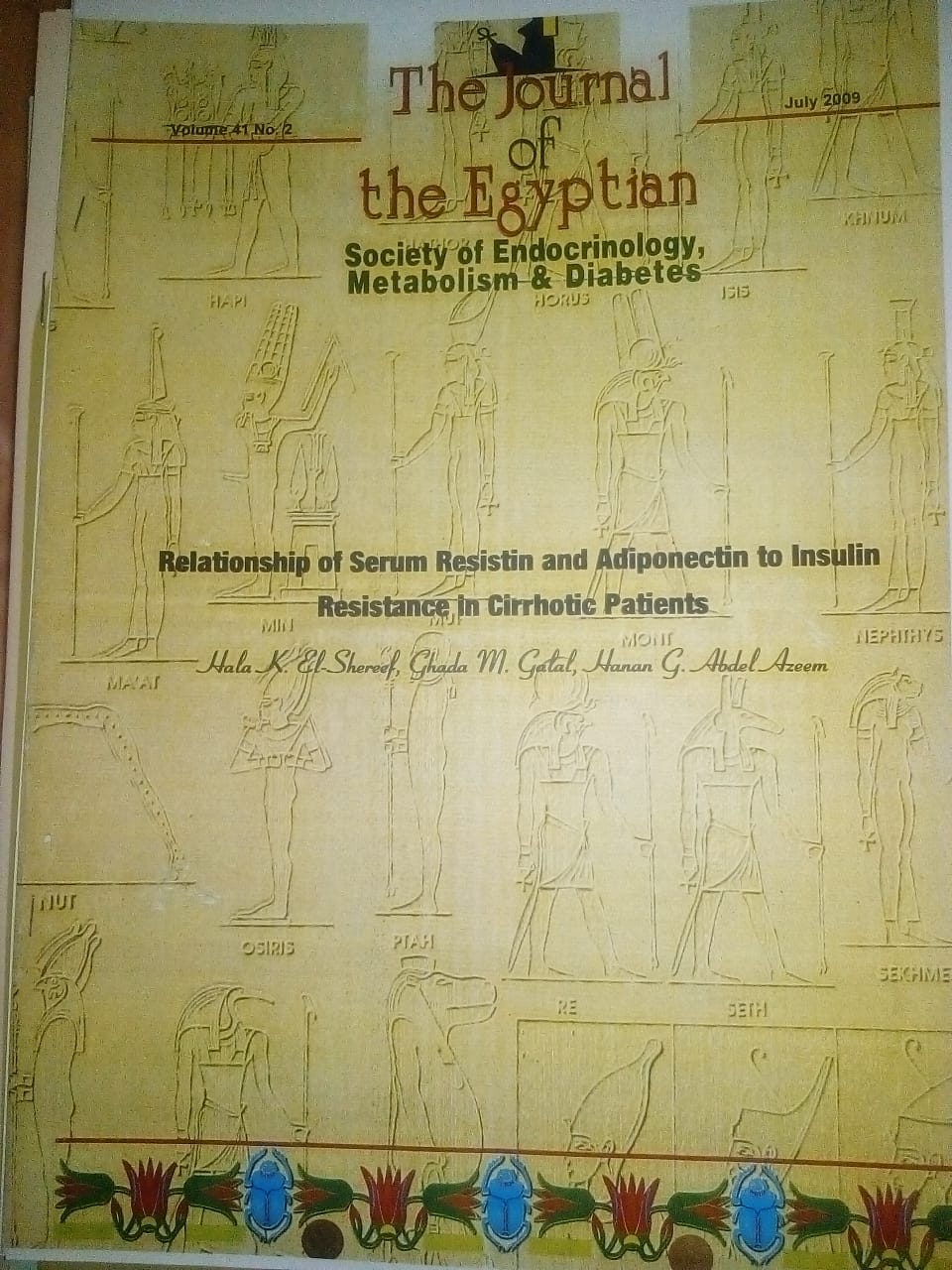Background: Liver cirrhosis is a catabolic disease
characterized by decreased adipose tissue mass
and a proinflammatory state. Although hyperinsulinemia
and insulin resistance are commonly found in these
patients, their exact mechanisms are not fully
understood. Among the candidate mediators, the
adipokines resistin and adiponectin have been
incriminated in experimental animal models. Their
exact role in cirrhotic patients remains a subject of
considerable debate. Aim: To study serum levels of
resistin and adiponectin in cirrhotic patients and their
relationship to insulin resistance and proinflammatory
cytokines. Subjects and Methods: Thirty-eight non-diabetic
patients with post-hepatitic liver cirrhosis (6 Child A,
14 Child B and 18 Child C) were included in the
study as well as age, sex and BMI matched fifteen
healthy controls. Fasting serum samples were collected
from all participants for estimation of glucose, insulin,
C-peptide, TNF--, IL-6, resistin and adiponectin.
HOMA-IR was calculated for all of them. Results:
Cirrhotic patients showed significantly higher serum
levels of insulin, resistin, adiponectin, IL-6 and
TNF- - than the control group. Serum resistin had
significant positive correlation with levels of IL-6
and TNF--, C-peptide, HOMA-IR and prothrombin
time. Also, resistin correlated negatively with serum
albumin and prothrombin concentration. Adiponectin
significantly increased with the progression of Child
grade. It significantly correlated with TNF-- but not
with BMI, insulin level or HOMA-IR. Conclusion:
Resistin may contribute to insulin resistance in
patients with liver cirrhosis. Circulating adiponectin
is increased dependent on the Child grade of the
disease suggesting that it might be an indicator of
severity of chronic liver disease reflecting one of
the body's anti-inflammatory mechanisms in this
disorder.
Key words: liver cirrhosis, insulin resistance,
resistin, adiponectin, proinflammatory cytokines


